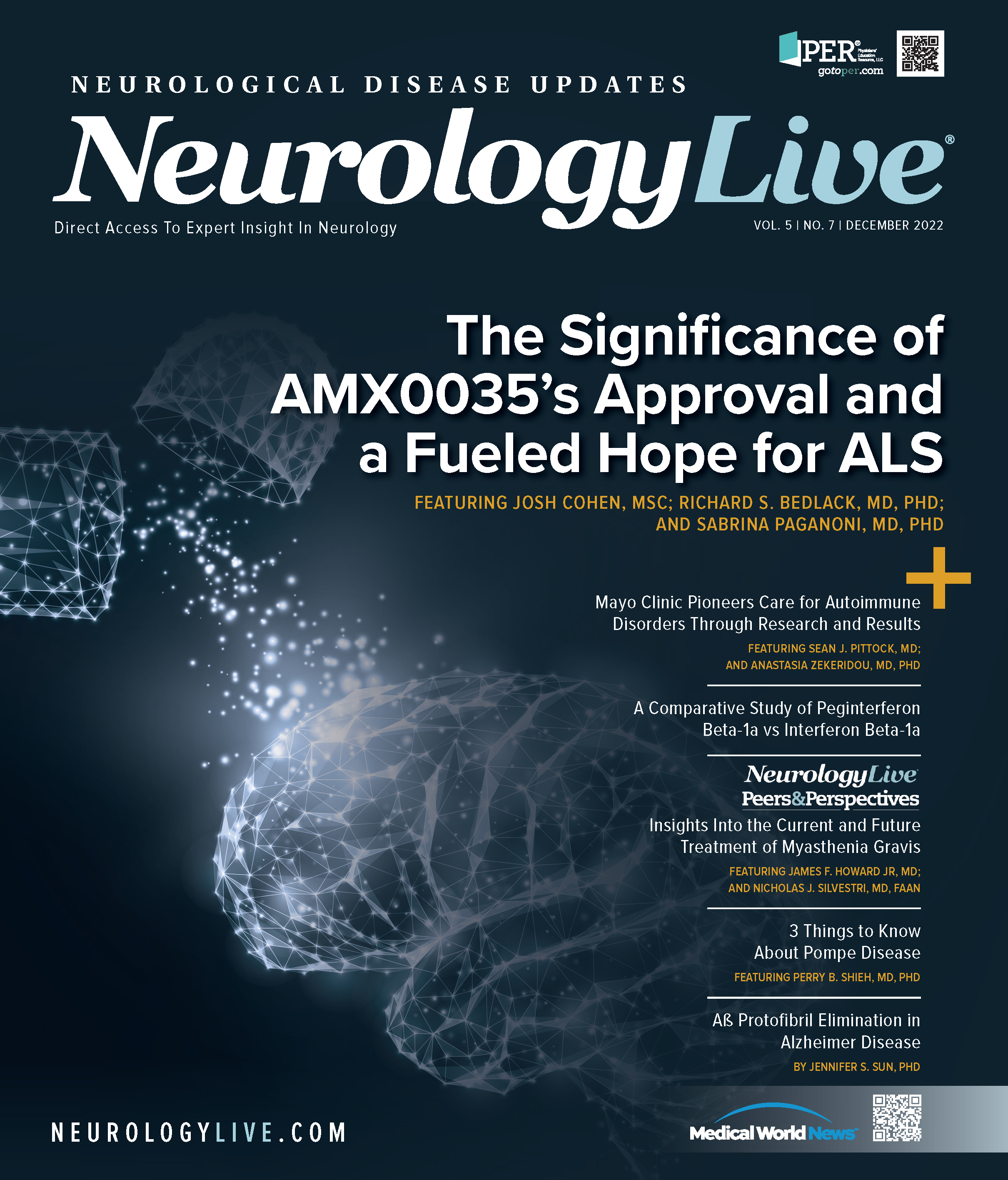Publication
Article
NeurologyLive
Gantenerumab Fails to Meet End Points in Initial GRADUATE Study Data
Author(s):
The GRADUATE studies, which spanned across 32 countries, showed minimal relative reduction in clinical decline for those on gantenerumab relative to placebo over a 116-week treatment cycle.
Levi Garraway, MD, PhD

Newly announced findings from the phase 3 GRADUATE 1 and 2 studies (NCT03444870; NCT03443973) showed that gantenerumab (Genentech/Roche), a fully human monoclonal IgG1 antibody, did not meet its primary end points of slowing clinical decline in patients with early Alzheimer disease (AD). The companies plans to showcase more of the data at the upcoming Clinical Trials on Alzheimer Disease (CTAD) meeting later this month.1
All told, gantenerumab-treated patients demonstrated a slowing of clinical decline of –0.31 (P = .0954) and –0.19 (P = .2998) on Clinical Dementia Rating-Sum of Boxes scores in GRADUATE 1 and 2, respectively, which was not statistically significant. The assessment, which measured cognitive and functional change across 6 areas, showed a relative reduction of 8% in GRADUATE 1 and 6% in GRADUATE 2 compared with placebo.
"So many of our families have been directly affected by Alzheimer’s, so this news is very disappointing to deliver" Levi Garraway, MD, PhD, chief medical officer, head, Global Product Development, Genentech, said in a statement.1 "We are profoundly grateful to the study participants, their care partners and study sites for their contributions to this research. While the GRADUATE results are not what we hoped, we are proud to have delivered a high quality, clear and comprehensive Alzheimer’s dataset to the field, and we look forward to sharing our learnings with the community as we continue to search for new treatments for this complex disease."
The trial, which featured nearly 2000 participants, assessed a target dose of 1020 mg with an optimized titration, aimed at maximizing exposure and minimizing dose interruption for better detection of potential clinical benefit. Patients aged 50 to 90 years with early AD confirmed by amyloid-ß pathology received subcutaneous gantenerumab injections or placebo for 116 weeks, with a long-term follow-up that reached 128 weeks. The dose titration was regardless of apolipoprotein ε4 allele status.
Amyloid-related imaging abnormalities (ARIA), a common radiological finding that has troubled the AD drug development field, were found in 25% of the pooled gantenerumab arms, with the vast majority being asymptomatic and very few leading to treatment discontinuation. Between the 2 groups, the incidence of isolated ARIA hemosiderin was balanced.
In a statement, the Alzheimer’s Association claimed it was disappointed by the topline findings, but noted, "these results will contribute to our understanding of this devastating and fatal disease. Although the drug did not meet its primary endpoint, the trials further illustrate the relationship between removal of beta-amyloid and reduction of clinical decline." The organization added, "We know that current antiamyloid approaches are not a cure, nor will they stop the disease on their own, but they are the first wave of effective treatments for Alzheimer's, with more to come."2
In October 2021, the FDA awarded gantenerumab breakthrough therapy designation for the treatment of patients with AD, with the intent that it could become the first subcutaneous medicine for those with the disease. Findings from the Scarlet RoAD (NCT01224106) and Marguerite RoAD (NCT02051608) open-label extension trials, which showed that the therapy significantly reduced brain amyloid plaques, were the basis for the decision. Findings from those trials were then used to optimize the trial design of the GRADUATE studies.3
At the 2018 Alzheimer’s Association International Conference, data from Scarlet RoAD and Marguerite RoAD showed that treatment with the high-dose agent lowered brain amyloid by an average of 59 centiloids on florabetapir PET. At years 1 and 2, 37% and 51% of patients, respectively, had amyloid-ß plaque levels below the positivity threshold. ARIA, which were a concern in the phase 1 trials, were found in about one-third of participants in the extension studies, most of which were asymptomatic.4
REFERENCES
1. Genentech provides update on phase III GRADUATE program evaluating gantenerumab in early Alzheimer’s disease. November 13, 2022. Accessed November 14, 2022. https://www.gene.com/media/press-releases/14974/2022-11-13/genentech-provides-update-on-phase-iii-g
2. Alzheimer’s Association statement on gantenerumab phase 3 topline data release. November 14, 2022. Accessed November 14, 2022. https://www.prnewswire.com/news-releases/alzheimers-association-statement-on-gantenerumab-phase-3-topline-data-release-301676710.html
3. Ad hoc announcement pursuant to Art. 53 LR: Genentech’s anti-amyloid beta antibody gantenerumab granted FDA breakthrough therapy designation in Alzheimer disease. News release. Genentech. October 8, 2021. Accessed October 8, 2021. https://www.businesswire.com/news/home/20211008005371/en/Ad-hoc-announcement-pursuant-to-Art.-53-LR-Genentech%E2%80%99s-Anti-Amyloid-Beta-Antibody-Gantenerumab-Granted-FDA-Breakthrough-Therapy-Designation-in-Alzheimer%E2%80%99s-Disease
4. Klein G, Delmar P, Voyle N, et al. Ganterenumab reduces amyloid-ß plaques in patients with prodromal to moderate Alzheimer disease: a PET substudy interim analysis. Alzheimers Res Ther. 2019;11(1):101. doi:10.1186/s13195-019-0559

Newsletter
Keep your finger on the pulse of neurology—subscribe to NeurologyLive for expert interviews, new data, and breakthrough treatment updates.





